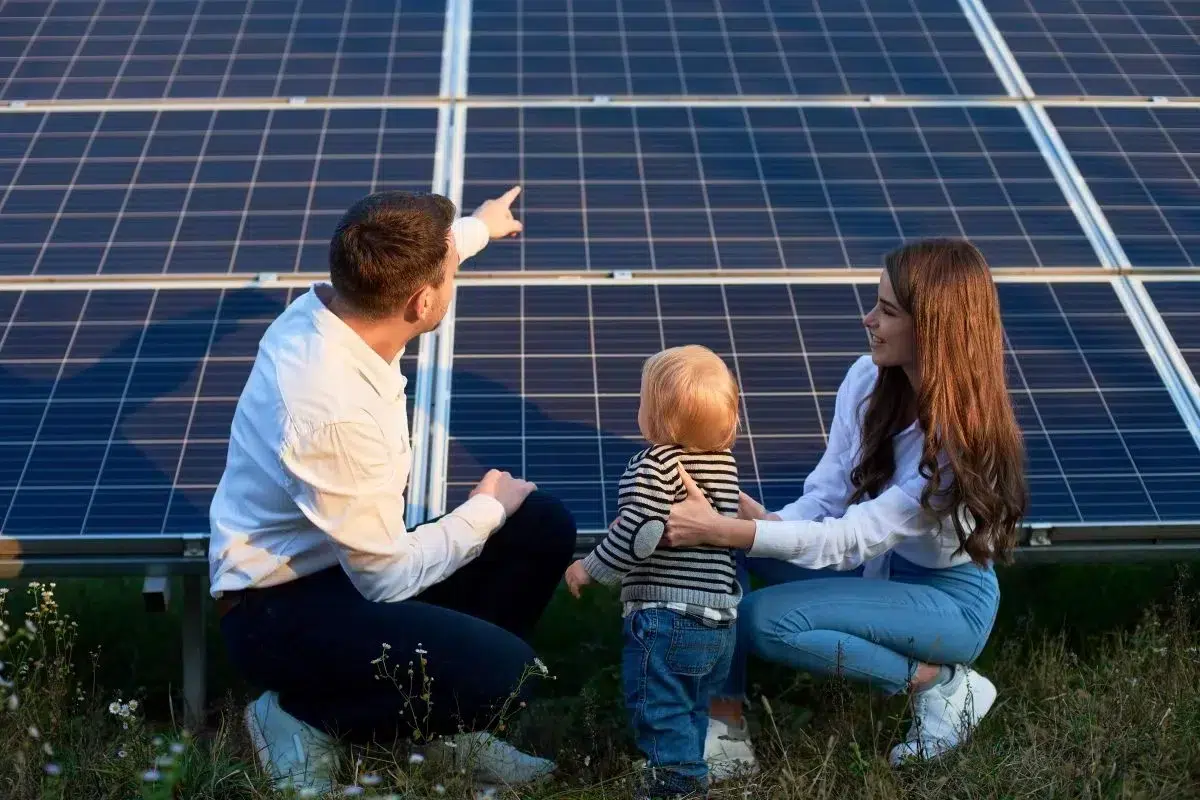Uusiutuvien energialähteiden lisääntyessä ja ympäristöhuolien lisääntyessä, yhä useammat asunnonomistajat siirtyvät aurinkovoimaan. kuitenkin, Yksi ihmisten suurimmista kysymyksistä on, kuinka monta aurinkopaneelia tarvitaan talon virrankäyttöön. Se on tärkeä kysymys, koska tarvittavien paneelien määrä vaikuttaa suoraan asennuskustannuksiin, kuinka paljon energiaa järjestelmä tuottaa, ja viime kädessä kuukausittaiset energiansäästösi. Aurinkopaneelit ovat erikokoisia, tehokkuustasoja, ja teholuokitukset, tarvitaan paneelien lukumäärän määrittäminen, monimutkainen. Useita muuttujia, mukaan lukien kotisi koko, sijaintisi, energiankulutustapojasi, ja kattosi maantieteellinen suuntaus vaikuttavat talosi sähkön tuottamiseen tarvittavien aurinkopaneelien määrään. Sen kanssa sanottu, tähän kysymykseen ei ole yksiselitteistä vastausta. kuitenkin, kotiisi tarvittavien aurinkopaneelien määrän arvioiminen edellyttää energiankulutuksesi ja aurinkopaneelien asennukseen käytettävissä olevan kattotilan ymmärtämistä.

1. Arvioi kodin energiantarpeet
Kodin energiantuotantoon tarvittavien aurinkopaneelien määrän määrittäminen edellyttää kodin energiatarpeen arviointia. Ensimmäinen askel tässä prosessissa on arvioida kotitalouden energiantarve. Tässä määritetään kotitalouden keskimääräinen päivittäinen ja kuukausittainen sähkönkulutus, mitattu kilowattitunneina (kWh). Tämän arvioinnin tulee sisältää kaikki laitteet, valaistus, lämmitys- ja jäähdytysyksiköt, ja kaikki muut kodin sähkölaitteet. Kun kodin energiantarpeet on selvitetty, aurinkoenergiasta tulee kannattava vaihtoehto, ja asunnonomistajat voivat sitten tutkia aurinkopaneelien määrää, joka tarvitaan näiden energiavaatimusten täyttämiseen ja siirtymään kestävämpään ja kustannustehokkaampaan energialähteeseen.. Energiatarpeen tarkka arvioiminen on ratkaiseva ensimmäinen askel määritettäessä, kuinka monta aurinkopaneelia tarvitaan kodin virrankäyttöön.
2. Laske yhden aurinkopaneelin energiantuotanto
Jos aiot siirtyä aurinkosähköön säästääksesi energialaskuja, ensimmäinen kysymys, jonka todennäköisesti kysyt, on, "Kuinka monta aurinkopaneelia tarvitaan talon sähkön saamiseen?” Tämän määrittämiseksi, sinun on aloitettava laskemalla yhden aurinkopaneelin energiantuotanto. Aurinkopaneelin energiantuotanto riippuu sen vastaanottaman auringonvalon määrästä sekä paneelin koosta ja tehokkuudesta. Energiantuotannon laskeminen, sinun on huomioitava paneelin teholuokitus ja aurinkotunnit alueellasi. Kertomalla teho ja auringon huipputunnit, voit laskea paneelin päivittäisen energiantuotannon. Kun tiedät tämän numeron, voit arvioida, kuinka monta paneelia tarvitset sähkötarpeeseesi. Muista, että muut tekijät, kuten varjostus, paneelin kulma, ja sääolosuhteet voivat vaikuttaa energiantuotantoon, joten on tärkeää neuvotella ammattilaisen kanssa tarkan arvion saamiseksi.
3. Määritä aurinkopaneeleille käytettävissä oleva tila
Aurinkopaneelien käytettävissä olevan tilan määrittäminen on ratkaiseva askel talon sähköntuotantoon tarvittavien paneelien lukumäärän määrittämisessä. Ensimmäinen näkökohta on katon kokonaisneliöala, johon aurinkopaneeleja mahtuu. On myös tärkeää huomata katon suunta ja sen kallistuskulma. Jos katto on voimakkaasti varjostettu tai siinä on esteitä, jotka rajoittavat tilaa, se ei ehkä sovellu aurinkopaneeleihin. Sellaisissa tapauksissa, maahan asennettavat aurinkopaneelit tai aurinkokatos voivat olla vaihtoehto. Kun käytettävissä oleva tila on määritetty, aurinkosähköasentaja voi antaa tarkan arvion paneelien määrästä, joka tarvitaan tuottamaan tarpeeksi sähköä talon virrankäyttöön. On suositeltavaa kääntyä ammattimaisen aurinkosähköasentajan puoleen paikan arvioimiseksi maksimaalisen tehokkuuden ja tehokkuuden varmistamiseksi.
4. Määritä paneelien optimaalinen koko ja lukumäärä
Talon virrankäyttöön tarvittavien aurinkopaneelien optimaalisen koon ja lukumäärän määrittäminen on ratkaisevan tärkeää maksimaalisen energiantuotannon takaamiseksi ja kustannusten minimoimiseksi.. Ihanteellinen koko ja paneelien lukumäärä ottaa huomioon erilaiset tekijät, kuten kodin energiankulutuksen, sijainti, ja käytettävissä oleva kattotila. On tärkeää valita oikea koko ja määrä paneeleita parhaan mahdollisen tehokkuuden saavuttamiseksi, riittävän sähkön tarjoaminen talolle välttäen samalla alikäyttöä tai ylituotantoa. Siksi, On suositeltavaa tehdä yksityiskohtainen energia-analyysi ja pyytää asiantuntija-apua, jotta voit määrittää, mikä sopii parhaiten sinun tarpeisiisi ja budjettiisi.
5. Laske projektin kokonaiskustannukset
Yksi ratkaiseva elementti kaikissa aurinkopaneeliprojekteissa on projektin kokonaiskustannusten laskeminen. Tämä ei sisällä vain aurinkopaneelien kustannuksia, mutta myös asennuskustannukset, luvat, ja kaikki lisälaitteet, joita järjestelmä tarvitsee toimiakseen kunnolla. On tärkeää ottaa huomioon myös aurinkopaneelien käyttöikä, koska tämä vaikuttaa hankkeen kokonaiskustannuksiin. Laskemalla tarkasti projektin kokonaiskustannukset, voit varmistaa, että sinulla on realistinen budjetti ja välttää odottamattomat kulut. Muita kustannuksiin vaikuttavia tekijöitä ovat kotisi koko, käyttämäsi energian määrä, ja kodin sijainti. On suositeltavaa ottaa yhteyttä ammattimaiseen aurinkopaneeliasentajaan saadaksesi tarkan arvion projektin kokonaiskustannuksista.
6. Ota huomioon paikalliset määräykset ja kannustimet
Kun määritetään kuinka monta aurinkopaneelia tarvitaan talon virransyöttöön, on tärkeää ottaa huomioon paikalliset määräykset ja kannustimet. Eri osavaltiot, kaupungit, ja jopa lähiöissä voi olla erityisiä sääntöjä ja määräyksiä aurinkopaneelien asentamisesta ja käytöstä. Näiden säännösten tutkiminen ja ymmärtäminen on erittäin tärkeää varmistaaksesi, että noudatat niitä. Lisäksi, aurinkopaneelien asentamiseen voi olla tarjolla kannustimia, kuten verohyvitykset tai -alennukset, jotka voivat vähentää merkittävästi järjestelmän kokonaiskustannuksia. Paikallishallinto tai sähkölaitokset voivat myös tarjota nettomittausohjelmia, jossa aurinkopaneelien tuottama ylimääräinen energia voidaan myydä takaisin sähköntuottajalle. On suositeltavaa tutkia ja analysoida kaikkia saatavilla olevia säädöksiä ja kannustimia aurinkopaneelijärjestelmäsi hyödyn ja kustannustehokkuuden maksimoimiseksi..
7. Arvioi asennuksen turvallisuusvaatimukset
Kun harkitaan aurinkopaneelijärjestelmän asentamista asuinympäristöön, on tärkeää arvioida asennuksen turvallisuusvaatimukset. Turvallisuuden tulee aina olla etusijalla, jotta voidaan varmistaa sekä kodin asukkaiden että järjestelmän asentajien hyvinvointi. On suositeltavaa neuvotella ammattiasentajan tai sähköasentajan kanssa varmistaaksesi, että kaikki tarvittavat turvallisuusstandardit täyttyvät. Tämä sisältää oikean maadoituksen ja liitoksen, sekä varmistaa, että järjestelmä on konfiguroitu ja asennettu paikallisten rakennus- ja sähkömääräysten mukaisesti. Lisäksi, On tärkeää merkitä ja dokumentoida asennettu järjestelmä oikein tulevien huolto- ja turvallisuustarkastusten helpottamiseksi. Arvioimalla ja toteuttamalla huolellisesti kaikki tarvittavat turvallisuusvaatimukset, aurinkopaneelijärjestelmät voivat tarjota turvallisen ja kestävän energialähteen koteihin.
8. Varmista, että järjestelmää huolletaan asianmukaisesti tehokkuuden maksimoimiseksi
Aurinkojärjestelmän asianmukaisen huollon varmistaminen on avainasemassa sen tehokkuuden maksimoimiseksi. Säännöllinen paneelien huolto ja puhdistus voivat auttaa estämään pölyn ja roskien kerääntymistä, mikä voi johtaa energiantuotannon vähenemiseen. On tärkeää tarkistaa paneelit ja järjestelmäkomponentit säännöllisesti, jotta mahdolliset ongelmat, kuten vaurioituneet johdot tai vialliset muuntimet, voidaan tunnistaa ja korjata.. Lisäksi, energiantuotannon ja -kulutuksen seuraaminen seurantajärjestelmien avulla voi auttaa havaitsemaan korjattavia säännönvastaisuuksia tai tehottomuuksia. Investoimalla asianmukaiseen kunnossapitoon ja valvontaan voidaan pidentää aurinkojärjestelmän käyttöikää ja varmistaa, että se tuottaa luotettavaa ja tehokasta energiaa tulevina vuosina.
Tiivistettynä, talon sähköä varten tarvittavien aurinkopaneelien määrän määrittäminen riippuu useista tekijöistä, kuten sijainnista, energiankulutus, ja paneelien tehokkuus. kuitenkin, aurinkopaneelitekniikan kehittyessä, asunnonomistajien on entistä helpompaa tuottaa tarpeeksi sähköä energiakustannustensa kattamiseksi. Aurinkopaneeleihin sijoittaminen säästää rahaa pitkällä aikavälillä, mutta myös auttaa pienentämään hiilijalanjälkeäsi. Muista tämä aina ennen kuin teet mitään päätöstä, sinun tulee neuvotella ammattiasentajan kanssa varmistaaksesi, että aurinkopaneelijärjestelmäsi on suunniteltu ja asennettu oikein optimaalisen suorituskyvyn saavuttamiseksi.
